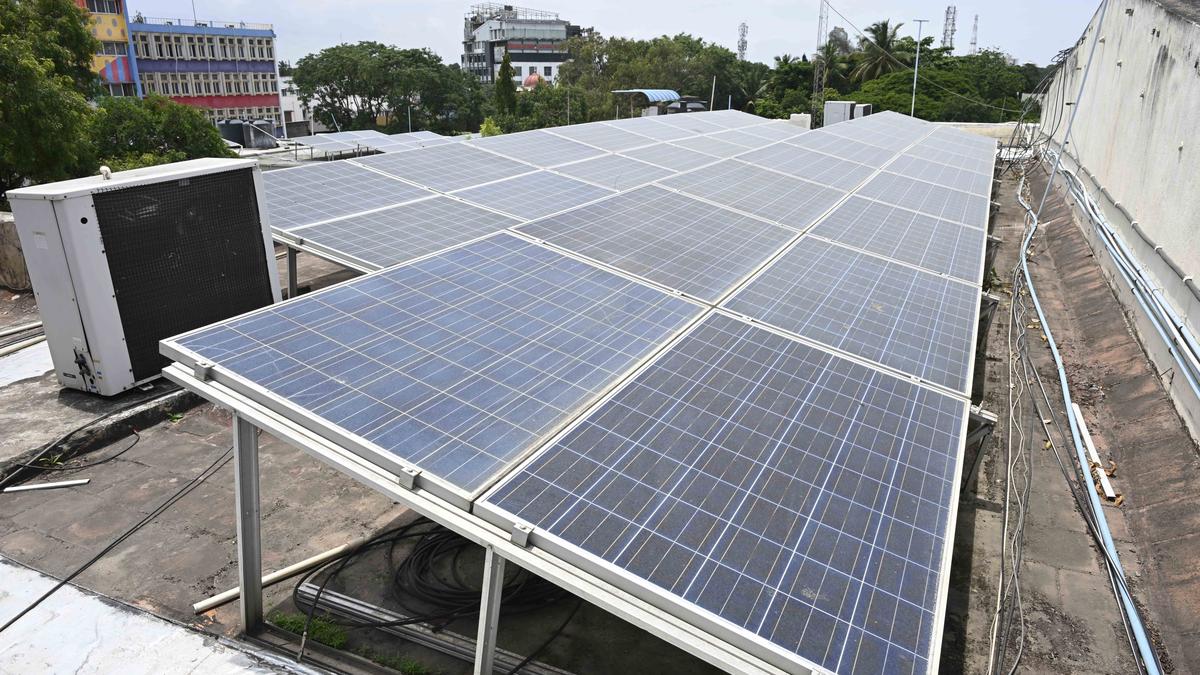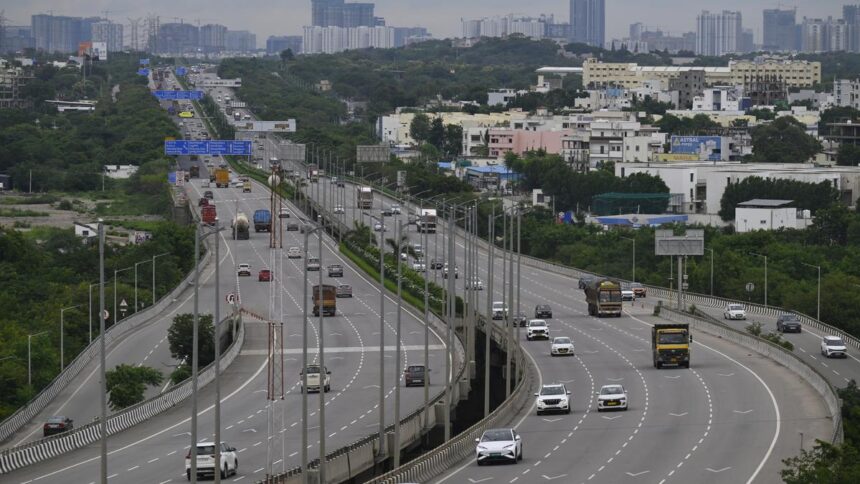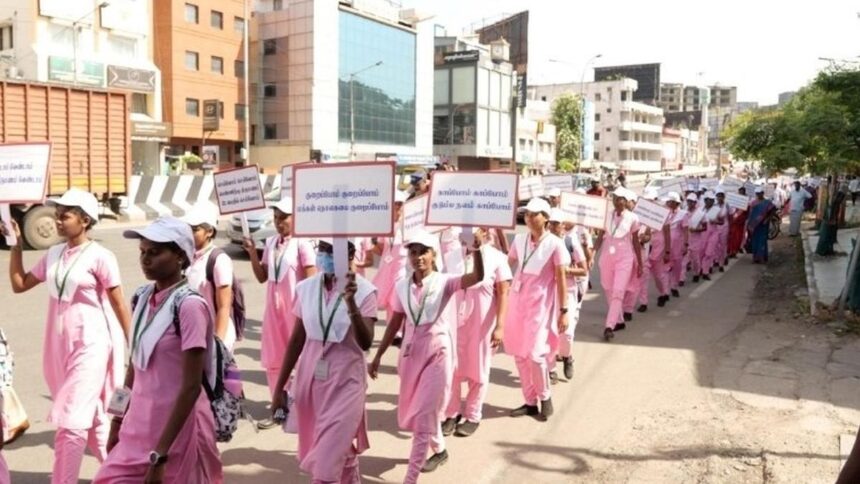
Rooftop solar panels installed at the Corporation office at Town Hall in Coimbatore city.
| Photo Credit: PERIASAMY M
The Coimbatore Corporation has commenced efforts to restore and operationalise rooftop solar systems that were installed more than six years ago across various civic buildings, but were inactive due to the absence of grid connectivity.
Several of the installations had deteriorated over time, with some panels sustaining damage or becoming dislodged. Following a recent assessment, the Corporation has undertaken remedial measures to reinstate functional units and replace defective components where necessary.
According to Corporation Commissioner M. Sivaguru Prabakaran, rooftop solar units of 7 kilowatt capacity each had been installed in 27 Corporation-run schools, 10 urban primary health centres, five zonal offices, and the main administrative office. “Restoration has been carried out in nearly all locations,” the Commissioner stated.
The civic body has initiated the process of procuring import-export meters from the Tamil Nadu Generation and Distribution Corporation (TANGEDCO) to facilitate the synchronisation of the rooftop solar systems with the grid. A pilot implementation is currently under way in one of the schools, where metering infrastructure has been installed and performance is being monitored over a one-month period. These bi-directional meters are expected to enable real-time monitoring of energy generated, consumed, and exported during daylight hours.
In the South Zone office, a new rooftop solar system is proposed to be installed, with advanced technologies such as bifacial panels—which can generate power from both surfaces—and individual inverters under consideration for implementation. The Commissioner noted that it may take up to three months for all systems to stabilise, after which a comprehensive analysis of energy generation and cost savings will be possible, once all units are equipped with functional import-export meters.
Separately, the Corporation is trialling solar-powered motion-sensor street lighting in select core urban areas. These standalone units, with a capacity ranging from 30 to 40 watts, are designed to brighten in response to movement and dim in the absence of activity. A detailed proposal amounting to ₹23 crore has been submitted for administrative sanction, covering the installation of 5,467 new streetlights and the replacement of existing fixtures across the city.
Published – July 16, 2025 06:57 pm IST























